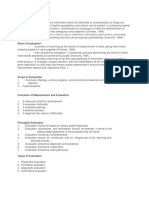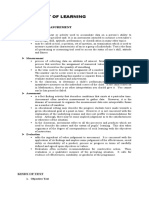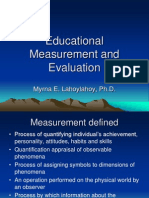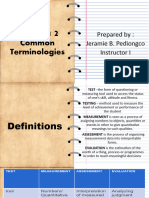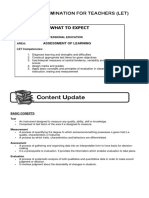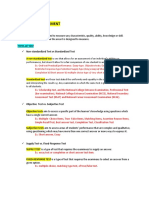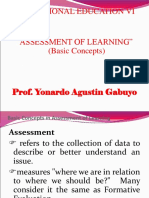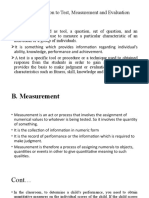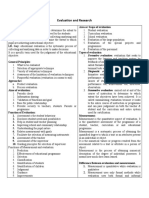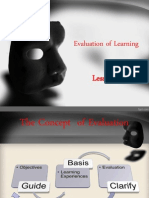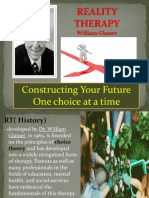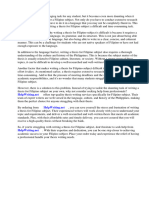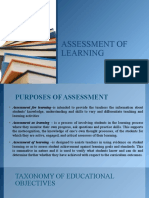0% found this document useful (0 votes)
37 views7 pagesTopic 9 Notes
This document discusses the evaluation of learning effectiveness, covering its meaning, purpose, and types. It defines key terms such as assessment, measurement, and various evaluation types including diagnostic, formative, and summative evaluations. Additionally, it outlines criteria for planning evaluations and tests, emphasizing the importance of continuous evaluation aligned with learning objectives.
Uploaded by
aswanjayrawCopyright
© © All Rights Reserved
We take content rights seriously. If you suspect this is your content, claim it here.
Available Formats
Download as PDF, TXT or read online on Scribd
0% found this document useful (0 votes)
37 views7 pagesTopic 9 Notes
This document discusses the evaluation of learning effectiveness, covering its meaning, purpose, and types. It defines key terms such as assessment, measurement, and various evaluation types including diagnostic, formative, and summative evaluations. Additionally, it outlines criteria for planning evaluations and tests, emphasizing the importance of continuous evaluation aligned with learning objectives.
Uploaded by
aswanjayrawCopyright
© © All Rights Reserved
We take content rights seriously. If you suspect this is your content, claim it here.
Available Formats
Download as PDF, TXT or read online on Scribd
/ 7





